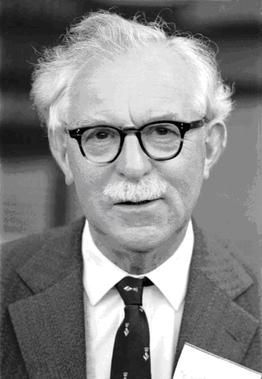Related Research Articles

John Ray FRS was a Christian English naturalist widely regarded as one of the earliest of the English parson-naturalists. Until 1670, he wrote his name as John Wray. From then on, he used 'Ray', after "having ascertained that such had been the practice of his family before him". He published important works on botany, zoology, and natural theology. His classification of plants in his Historia Plantarum, was an important step towards modern taxonomy. Ray rejected the system of dichotomous division by which species were classified by repeated sub-division into groups according to a pre-conceived series of characteristics they have or have not, and instead classified plants according to similarities and differences that emerged from observation. He was among the first to attempt a biological definition for the concept of species, as "a group of morphologically similar organisms arising from a common ancestor". Another significant contribution to taxonomy was his division of plants into those with two seedling leaves (dicotyledons) or only one (monocotyledons), a division used in taxonomy today.

Johann Jacob Dillen Dillenius was a German botanist. He is known for his Hortus Elthamensis on the rare plants around Eltham, London, and for his Historia muscorum, a natural history of lower plants including mosses, liverworts, hornworts, lycopods, algae, lichens and fungi.

Species Plantarum is a book by Carl Linnaeus, originally published in 1753, which lists every species of plant known at the time, classified into genera. It is the first work to consistently apply binomial names and was the starting point for the naming of plants.

Lindisfarne Castle is a 16th-century castle located on Holy Island, near Berwick-upon-Tweed, Northumberland, England, much altered by Sir Edwin Lutyens in 1901. The island is accessible from the mainland at low tide by means of a causeway.

Geoffrey Stephen Kirk, was a British classicist who served as the 35th Regius Professor of Greek at the University of Cambridge. He published widely on pre-Socratic philosophy and the work of the Greek poet Homer, culminating in a six-volume philological commentary on the Iliad published between 1985 and 1993.

William Thomas Stearn was a British botanist. Born in Cambridge in 1911, he was largely self-educated and developed an early interest in books and natural history. His initial work experience was at a Cambridge bookshop, but he also had a position as an assistant in the university botany department. At the age of 29 he married Eldwyth Ruth Alford, who later became his collaborator, and he died in London in 2001.

Heraldic visitations were tours of inspection undertaken by Kings of Arms throughout England, Wales and Ireland. Their purpose was to register and regulate the coats of arms of nobility, gentry and boroughs, and to record pedigrees. They took place from 1530 to 1688, and their records provide important source material for historians and genealogists.

Michelangelo Tilli or Michele Angelo Tilli was an Italian physician and botanist, noted for his publication of Catalogus Plantarum Horti Pisani.

Marx/Engels Collected Works is the largest existing collection of English translations of works by Karl Marx and Friedrich Engels. Its 50 volumes contain publications by Marx and Engels released during their lifetimes, many unpublished manuscripts of Marx's economic writings, and extensive personal correspondence. The Collected Works, for the most part compiled by the Institute of Marxism-Leninism of the CC CPSU, was issued from 1975 to 2004 by Progress Publishers in collaboration with Lawrence and Wishart and International Publishers.

Western Atlantic seabream is an ocean-going species of fish in the family, Sparidae. It was first described in 1758 by the "father of modern taxonomy," Carl Linnaeus, in the 10th edition of his book, Systema Naturae. Within their native range, Western Atlantic seabream are also known as the seabream, brim, tropical sheepshead, chopa amarilla, or salema. Although they are eaten, and have been described as pan fish, Western Atlantic seabream have not gained the popularity as a gamefish that their relative, the sheepshead has.

Classes Plantarum is a book that was written by Carl Linnaeus, a Swedish botanist, physician, zoologist and naturalist.
Surrey Record Society is a text publication society which edits and publishes historic records relating to the county of Surrey, England. The society concerns itself with the historic county, which includes, in addition to the current administrative county, the areas now forming the London boroughs of Lambeth, Wandsworth, Southwark, Croydon, Kingston, Merton, Sutton, and Richmond. The Society has also published two editions of registers of medieval bishops of Winchester, Surrey having historically formed part of the Diocese of Winchester.

De Lacy Evans O'Leary (1872–1957) was a British Orientalist who lectured at the University of Bristol and wrote a number of books on the early history of Arabs and Copts.

Robert McQueen Grant was an American academic theologian and the Carl Darling Buck Professor Emeritus of Humanities and of New Testament and Early Christianity at the University of Chicago. His scholarly work focused on the New Testament and Early Christianity.

Alfred Forbes Johnson, MC was an English academic librarian, bibliographer, curator, and expert in typography. He was Deputy Keeper of Printed Books at the British Museum. He is author of many bibliographical reference works, and the standard Encyclopaedia of Typefaces.
Christopher Robert Cheney was a medieval historian, noted for his work on the medieval English church and the relations of the papacy with England, particularly in the age of Pope Innocent III.
Linnaeus Link is an international collaboration between libraries with significant holdings of material by or relating to Carl Linnaeus (1707–1778), his students, and his legacy.
As of 2018, five firms in France rank among the world's biggest publishers of books in terms of revenue: Éditions Lefebvre Sarrut, Groupe Albin Michel, Groupe Madrigall, Hachette Livre, and Martinière Groupe.
In 2018, two firms in Spain ranked among the world's biggest publishers of books in terms of revenue: Grupo Planeta and Grupo Santillana. In 2013, there were 524,213 titles in print in Spain, including 76,434 new titles.

Books in the United Kingdom refers to books in the United Kingdom. In other words, "written or printed work consisting of pages glued or sewn together along one side and bound in covers", in the United Kingdom.
References
- ↑ "Ray Society, registered charity no. 208082". Charity Commission for England and Wales.
- ↑ List of the Annual Volumes of the Ray Society, from their Commencement, in 1844, to August, 1880
- ↑ UCL Special Collections (2020-04-23). "Ray Society". UCL Special Collections. Retrieved 2023-12-18.